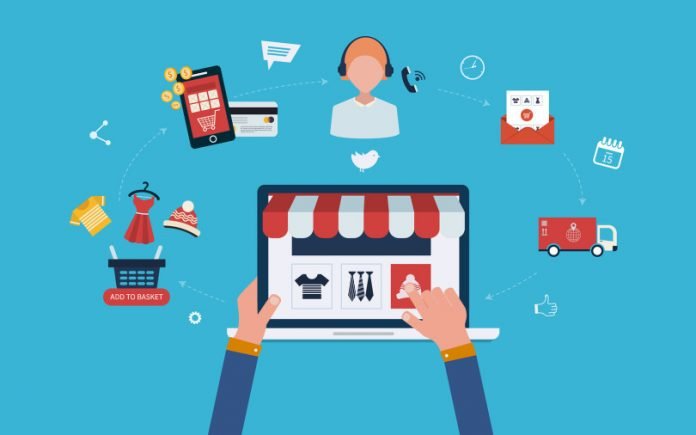With the advent of Amazon and WalMart, people can buy whatever they want from basically anywhere around the web or offline. The integration of in-store and online is all about experience: meeting the consumer wherever demand may take him or her. In fact, one primary way to capitalize on eCommerce is to integrate completely with the in-store experience. However, startups typically lack that retail presence.
Work toward that opportunity by deploying a series of strategies designed to give your eCommerce business the competitive edge you need to acquire greater market share and expand into the real world.
Remember, Amazon began in a garage, packing books into a folding carton. Simple branding and quality service got the brand to where it is today.
Service the Customer Faster
Amazon offers agility because it has shipping centers basically everywhere. One way to capitalize on that agility is to sell through Amazon. Another way, without giving money to a middle man, is to focus on order fulfillment. Utilizing a system, either with workers manning the order database, or some kind of sophisticated email alert system, make sure you’re processing and packaging orders as quickly as you can.
The faster the customer receives a tracking number, the more at ease he feels. A system for fulfillment also reduces total time spent shipping. It doesn’t affect transit time by much, but faster fulfillment means more orders go to the shipping company and off the warehouse floor within a 24-hour period. That daily efficiency has real impact on your bottom line, and on customer satisfaction.
Attract New Business
A host of research is available on copywriting and design techniques to develop a better website. Are you using these resources? Building a website today is no longer an afterthought. Even the major players are dealing with this issue. Reed Hastings called the Amazon Video platform a confusing mess, while his own service is criticized for lackluster recommendations. Developing an attractive website that isn’t offensive and confusing to the user is difficult even when you have a massive budget to play with.
Still, follow some basic rules about usability and design to get halfway there. Sites should have a domain name that is easy to remember. It’s also helpful if products are organized by category, with specific items placed inside respective categories to create a hierarchy the customer can easily navigate. Avoid offensive, loud neon coloring and automatic sound or video that plays when the site loads. Once these basics are covered, you can begin to examine statistics about your site to get a clearer picture of what might need improvement.
Outstanding Customer Service
For a reasonable cost, startups can now outsource technical support for products to get off the ground. This has two primary effects: it enhances a company’s image, and provides the customer better service in a timely manner.
Customers have come to expect excellent service and may make purchasing choices based on the level of service a company provides. For a small fee, there are multiple ways to employ customer service agents from around the world to deal with product concerns.
Final Thoughts and Other Tips
Trying a multi-prong approach to marketing is a good way to maximize ad dollars. Invest in smaller social networks and websites, rather than going straight to the major providers. True, the level of traffic won’t be as strong or maybe as consistent, but you do get a better rate and options to target.
Targeting is everything, so most of the battle is one with excellent ad copy and a quality website that drives people to action.




